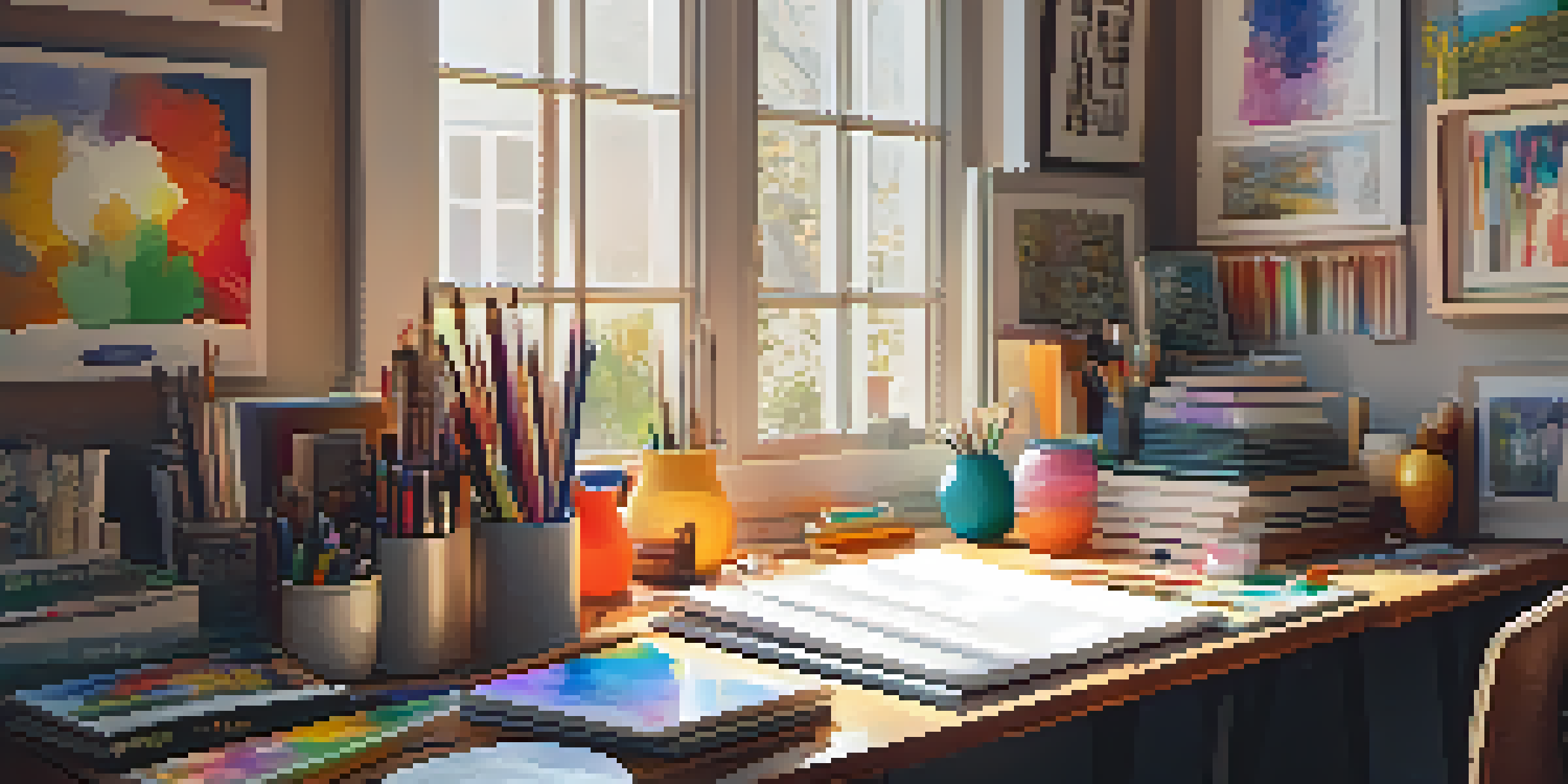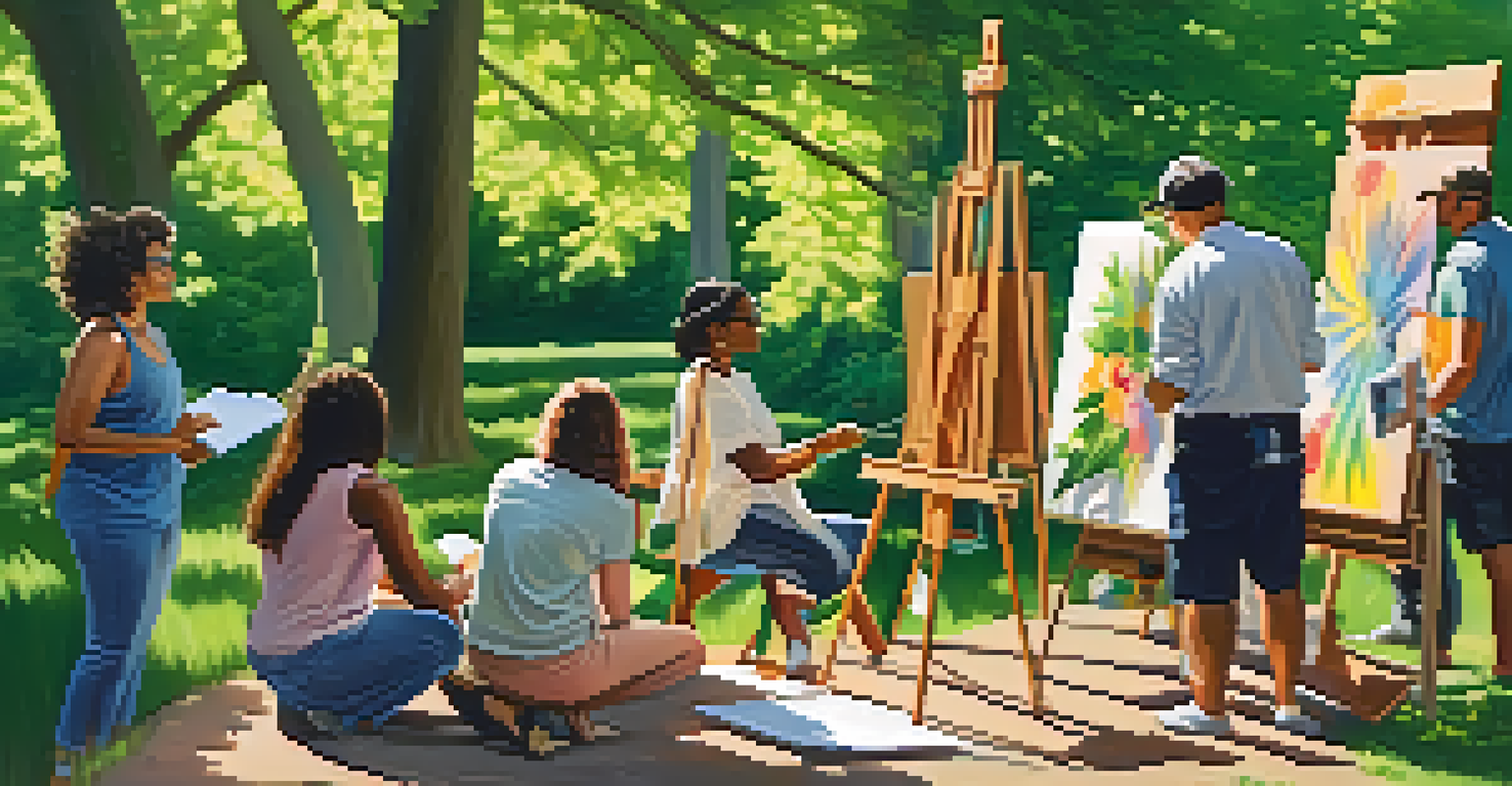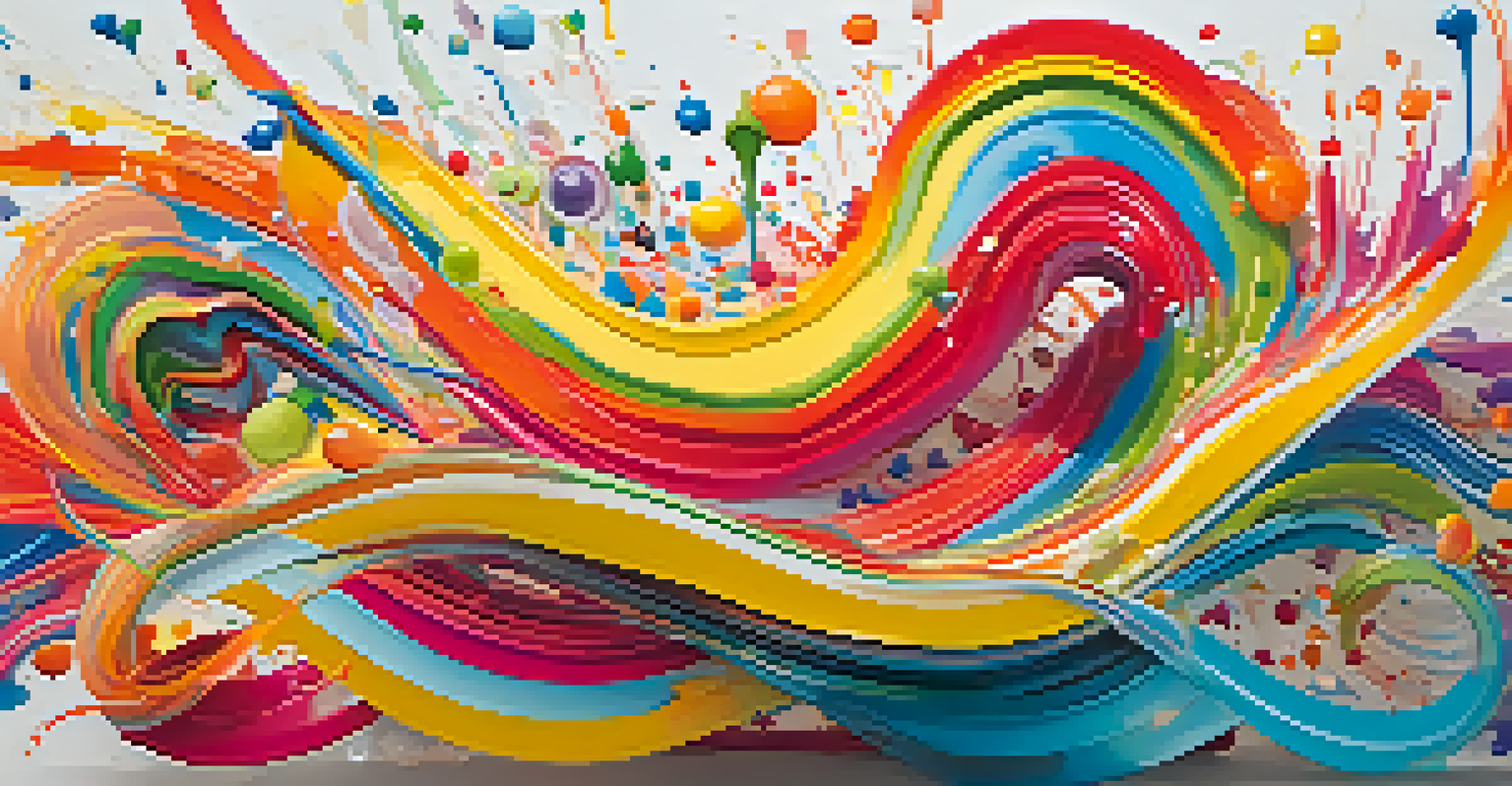Fostering Creativity: The Role of Play in Artistic Growth

Understanding the Link Between Play and Creativity
Play is often seen as just a way to pass the time, but it holds a deeper significance, especially in artistic development. When we engage in play, whether through games, improvisation, or free expression, we're tapping into a reservoir of creativity that can transform our artistic endeavors. This playful mindset allows us to explore new ideas and perspectives, fostering an environment where creativity can thrive.
Play is the highest form of research.
Moreover, play encourages experimentation without the fear of failure. In a playful setting, artists can test boundaries and take risks that they might shy away from in a more structured environment. This freedom to explore can lead to unexpected breakthroughs, often resulting in innovative artistic expressions that might not have emerged otherwise.
Ultimately, understanding how play nurtures creativity is essential for artists at any stage of their journey. By embracing play, we can unlock new levels of artistic growth that enhance our ability to create, inspire, and connect with others through our work.
How Different Types of Play Inspire Artistic Expression
There are various forms of play that can stimulate artistic expression, from imaginative play to physical play. Imaginative play, for example, allows artists to envision worlds beyond their own, tapping into fantastical ideas that can influence their work. This kind of play encourages storytelling and can lead to compelling narratives within visual art, writing, or performance.

Physical play, on the other hand, can be a great way to break free from mental blocks. Engaging in activities like dancing, sports, or even just moving around can invigorate our bodies and minds. This change in physical state can lead to a fresh perspective and inspire new ideas that can be translated into artistic projects.
Play Fuels Artistic Creativity
Engaging in play empowers artists to experiment and explore new ideas, leading to innovative expressions.
By recognizing and incorporating various types of play into our creative processes, we can cultivate a more dynamic approach to our art. This variety not only keeps our practice fresh but also invites spontaneity and joy, elements that are vital for artistic growth.
The Benefits of Play for Artists of All Ages
Play is not solely for children; it’s a crucial element for artists of all ages. Adults often lose touch with their playful side, which can stifle creativity and lead to burnout. By intentionally incorporating play into their routines, artists can reignite their passion and enthusiasm for their craft, leading to greater productivity and satisfaction.
Creativity is intelligence having fun.
Furthermore, play can enhance problem-solving skills, which are invaluable for artists facing creative challenges. When we approach obstacles with a playful mindset, we’re more likely to think outside the box and discover unconventional solutions. This can be particularly beneficial in collaborative projects where teamwork and creativity intersect.
In essence, prioritizing play can rejuvenate an artist's spirit, making the creative process feel less like a chore and more like an adventure. It reminds us that art is, at its core, an expression of joy and exploration.
Creating a Playful Environment for Artistic Growth
To harness the power of play, artists must cultivate an environment that encourages experimentation and fun. This can be achieved by designing a workspace that inspires creativity, filled with materials that spark curiosity and invite exploration. A cluttered desk with art supplies, musical instruments, or even playful decor can stimulate the imagination.
Additionally, fostering a community of like-minded individuals who value play can significantly enhance the creative process. Joining art groups, attending workshops, or participating in collaborative projects can provide opportunities for playful interactions. These connections can lead to fresh ideas and new perspectives that enrich our artistic practices.
Play Benefits Artists of All Ages
Incorporating play into daily routines reignites passion and enhances problem-solving skills for artists, regardless of their age.
Creating a playful environment is about more than just physical space; it’s also about mindset. By embracing a playful attitude, artists can view challenges as opportunities for growth rather than obstacles, ultimately leading to a more fulfilling artistic journey.
Play as a Tool for Overcoming Creative Blocks
Creative blocks are a common hurdle for artists, but incorporating play can be a powerful antidote. When we feel stuck, engaging in playful activities can help shift our mindset and release tension. Activities such as doodling, playing with colors, or even engaging in a completely different art form can provide the mental break needed to spark inspiration.
Moreover, play can help reduce the pressure that often accompanies the creative process. By reframing our approach to art as an enjoyable exploration rather than a serious obligation, we open ourselves up to new ideas. This shift in perspective can often lead to unexpected breakthroughs that reignite our passion and creativity.
Ultimately, using play as a tool to combat creative blocks enables artists to reconnect with their imaginative selves. It reminds us that creativity is not always linear and that sometimes, stepping away from our work can lead us right back to it with renewed vigor.
Incorporating Play into Your Daily Artistic Routine
Incorporating play into your daily routine doesn’t have to be complicated. Simple practices, such as dedicating a few minutes each day to free drawing or experimenting with new materials, can make a significant difference. Setting aside time to engage in playful exploration can help break the monotony and keep your artistic juices flowing.
Another effective way to invite play into your routine is to create themed challenges or prompts. For instance, setting a goal to create something inspired by a random word or color can introduce an element of surprise and excitement to your practice. These prompts can serve as a springboard for creativity, pushing you to think in new ways.
Create a Playful Artistic Environment
Fostering a playful workspace and community encourages experimentation and joy, essential for artistic growth.
Ultimately, the key is to approach your artistic routine with a sense of curiosity and openness. By allowing play to become a regular part of your process, you'll not only enhance your creativity but also deepen your connection to your art.
The Lasting Impact of Play on Artistic Growth
The influence of play goes beyond immediate artistic outcomes; it has a lasting impact on our overall growth as artists. When we embrace play, we develop resilience and adaptability, skills that are essential in navigating the ever-changing landscape of the art world. This flexibility allows us to evolve our practices and stay relevant in our creative pursuits.
Moreover, the joy and fulfillment derived from play can lead to a lifelong love for art. Artists who prioritize play often find themselves continuously inspired, seeking out new experiences and creative avenues. This passion can result in a richer, more dynamic body of work that reflects the essence of who they are.

In the end, fostering creativity through play not only enhances our artistic abilities but also enriches our lives. By leading with playfulness, we create space for innovation, connection, and growth that can resonate deeply within our artistic journeys.